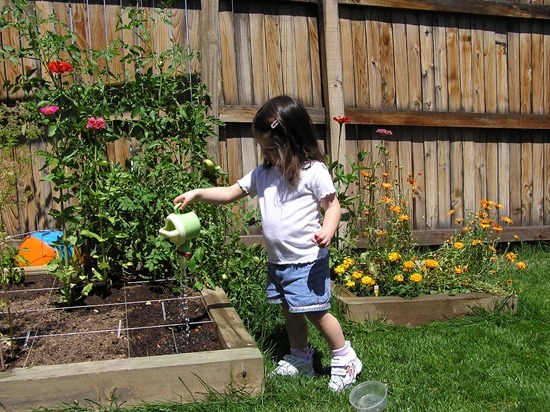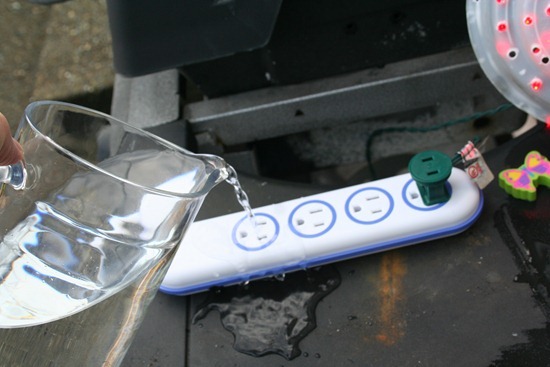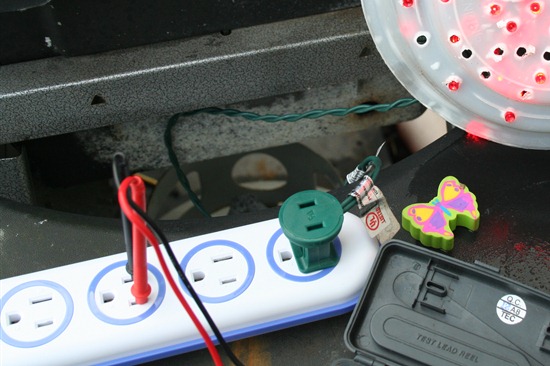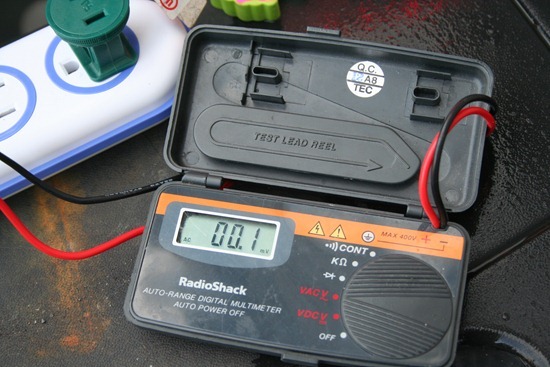Square Foot Gardening Grow More in Less Space: Book Review
13.3 years ago product review, square foot gardening
I can not say enough positive things about this book, it might be because the very first gardening book I ever read was the original Square Foot Gardening book. It provided me with the basic tools to setup my first garden with great success. Provided I can basically credit my success to gardening and the eventual creation of this blog directly to the initial reading of this book, in many ways I look at Mel Bartholomew
as the original “cheap vegetable gardener” with the many cost saving tips he mentions in his books. Though the original book written many decades ago can still be applied today, there were a few parts of this book that made following all the techniques difficult, one specific example is his “perfect soil” consisted of 7 different ingredients which many could be purchased at your local nursery but one specific ingredient “wood ashes” are much less common with majority of houses using alternate fuels for heating these days. The good news this problem as well as many others were taken care of in his latest installment of his series All New Square Foot Gardening: Grow More in Less Space!
As the title explains the primary premise of square foot gardening is by dividing your garden into one foot by one foot squares. Not only is this beneficial for garden organization but also allows an easy way to implement intensive gardening in your own backyard garden allowing you to grow more vegetables in much less space compared to growing the same plants in rows. Be eliminating the need for rows or more specifically the need for spaces between rows you can plant more vegetables in a smaller space. This is visualized below with the visualization in the left being 144 carrots being grown using the square foot method compared to the visualization in the right using conventional row methods (with minimal gaps between rows) yielding 60 carrots with both being planted in a 9 square foot area.
Now with no rows you might be thinking, “How can I weed, water, or harvest without having access through rows, the solution to this is actually quite simple by creating a series of small beds no more than 4 feet wide. This provides easy access to do your garden maintenance by only requiring a maximum of a 2 foot reach required to access any square from one of the four sides. Below you can see my then two year old daughter demonstrating the ease of this.
Now I have talked a bit about the process lets get back to the book. What is great about this book is it provides chapters on all of the stages of starting your own garden. It goes from picking your best location to start your garden, creating vertical trellises, starting seeds indoors/outdoors, watering and maintaining your plants, and finally harvesting. But wait there’s more…there is also a great section on extending your gardening season with hoop covers and cold frames with detailed directions on all of these.
Though the content of the chapters are great the section I keep coming back to year after year is the appendix in the back that lists the common types if vegetables which provides great visuals to how and when to plant and harvest each of these veggies as well as specific care instructions to deter various disease and pests associated with that particular plant. Unfortunately this section was removed from the new book, but the good news is since the previous version
has been in print for over 30 years you can pickup a copy used for almost nothing.
Overall if there is on gardening book I would recommend to someone starting out with gardening All New Square Foot Gardening: Grow More in Less Space! would be the first book I would recommend. Not only is the advice very effective it is also economical providing great methods using many materials you may already have in your back yard.
Wet Circuits water resistant power strip review
13.3 years ago electronics, power strip, product review, water, waterproof, wet circuits
One problem with growing plants indoors is the requirement for indoor lighting, combined with the need to pour water on plants around such lighting causes a potential electrical disaster. When I heard about Wet Circuits water/tamper resistant power strip I simply had to try it out. Not having the $70 to buy one myself, the nice people at WetCircuits sent me a sample to try out these claims for myself.
After reviewing their very informative infomercial style demonstration (see below) I felt I would not be doing my job unless I reproduced at least some of these demonstrations for myself.
Being cautious I started with sticking in my voltmeter while having my homemade supplemental LED light plugged in.
Test #1 one passes with flying colors
Next it was time to pour water on the live outlet…now using a normal socket this would result in a nice spark if you were lucky. As you can see from the video below, this also passed without any problems.
I decided to skip the tweezers test provided that the voltmeter answered the expected result and well it is just plain scary to try even when I know it won’t shock me.
Now if you have shelves of grow lights or your own grow box for $70 this is a decent investment though it does buy you some piece of mind.
Soil Logic Moisture X-Tend testing and review
13.7 years ago moisture sensor, product review, Uncategorized, water
I was contacted by SoilLogic and offered a free sample of their product Moisture X-Tend. Though I could attempt to describe their product, I will let them do it in their own words…
Moisture X- Tend helps water penetrate the surface of the potted soil easier and remain within the soil root zone up to 4X’s longer than untreated water.
This innovative soil moisture management product helps prevent water from evaporating too quickly or draining past the roots of the plant. Moisture X-Tend is so easy to use — just add and mix the recommended amount directly to our watering can and water as usual.
The specific claim on the bottle that got my attention was that by using the product you can actually water plants 4 times less often. I must say I was a little skeptical about this claim, though I decided to give it a try.
My first attempt was shortly after I brought out a couple of my pepper plants from my grow box. They both were bearing fruit of similar size and overall plants were of very similar size. I started by watering one plant with water and the second with Moisture X-Tend and I observed their physical appearance over a period of time. There was one problem on day two it rained ruining my results.
Having an empty client controlled grow box in my garage equipped with a moisture Vegetronix sensor, I decided this would be a great place to conduct my testing. I watered two identical pots filled with Miracle Grow Potting Mix (without moisture control) with 250ml of liquid. One being purified water, the second with Moisture X-Tend as described in the directions and monitored the moisture saturation over time.
As you can see the Moisture X-Tend started out with a much greater water saturation immediately after the watering and continued to hold the moisture 1.5 times longer than water alone.
Now this 1.5 times is quite a difference between the 4 times claim on the bottle, though in their defense this was from a single application and the FAQ on their website mentions that watering frequency is reduced after about a month of use. I also was using a 4 inch pot and I would suspect that a larger pot would show better results. If there is interest I am considering extending this experiment over a longer period of time to attempt to prove/disprove the 4 times claim that they mention on the bottle.
Though for me this is not practical to use all summer Moisture X-Tend is a great option when you are going away for a few days on vacation and do not have an automated watering solution or are forgetful like me and just get busy and neglect those poor plants for a day (or two) too long.
Tags: water
EasyBloom plant sensor review
15.2 years ago computer, EasyBloom, electronics, gadget, garden planning, product review
I will admit, I have a weakness for electronic gadgets, when I got wind of the EasyBloom I just had to try it out. The EasyBloom plant sensor is a device with built-in sensors to measure light intensity, humidity, temperature, and moisture content in your soil. It has three basic modes: Recommend, Monitor, and Water.
With the Recommend setting you place the EasyBloom into a location you want to grow something, let it sit there for at least 24 hours, plug it into your computer, and it will provide a detailed analysis of your planting area and provide a list of plants that would thrive in that location.
The Monitor setting allows you to diagnose problems with a particular plant. You first define the type of plant you want to monitor, turn on the device and place it next to the not so healthy plant, water, return 24 hours later, and plug it again into your computer. It will use the data stored in the sensors to give you a diagnosis to what the plant’s ailment might be.. Of course, this will not diagnose various pest or disease issue but can let you know if you have planted a little too early, in the wrong location, or are not watering enough (or too much) based on your soil structure.
Finally it has the water setting which the name should imply, will notify you when you need to water your plants.
To test this thing out I had three locations in mind to take measurements, each of which would provide a huge diversity of readings.
First, I put the EasyBloom in my grow box in the Recommend mode. I have complete control over the temperature and lighting I definitely could confirm the devices accuracy and I expected to see decent diversity of plants recommended. After placing the device in my grow box for almost 24 hours (see missing results below)
Overall the readings were nearly exactly what I expected though I was hoping to get a full sun rating, guess I may need to add an extra bulb to the box. Even with my conditions it did recommend 176 plants that I could grow inside it to maturity, though I am going to demand a rematch after adding a little more light
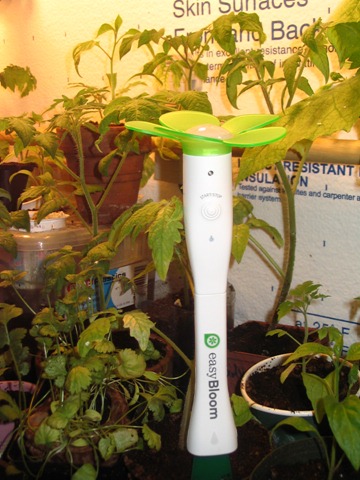
Second, I brought the sensor and set it up next to my office window. Currently I am growing Lemon Verbena I transplanted from my garden. I wasn’t concerned about moisture content so for this reading I didn’t include the moisture sensor and here were the results that were returned.

After this result I felt a little better about my grow box since it at least it was beating of an eastern facing window sill. With this result the program recommended 92 shade loving plants with Lemon Verbena not being one of them, though I have been providing some supplemental light to the plants.
Finally, I used the EasyBloom on my southern facing fence line plot (where I normally grow my cucumbers and tomatoes) This is where I wondered of the usefulness of EasyBloom to actually give good information about planning a garden in the offseason. Though I can not grow tomatoes outside right now due to cold, would it still let me know that it was still possible. Well here are the readings:

When I put the sensor outside it was raining pretty hard so passed the “weather proof” test. Though it did clear up the next day which is reflected in the “Full Sun” light reading. This was the obvious winner with 3458 plants recommended with the over 5000 in their database.
In conclusion, I will be the first to admit that the EasyBloom would not be on the necessity list for gardening tools, but for a beginning gardener it could provide some valuable incites to help your first few years be much more successful. For nerds/geeks like me it is a pretty cool toy, that I will be sure to be using in testing new lighting and grow box designs in the future.
Tags: cheap, growbox, led, outdoor plants, tomato plants, vegetables



